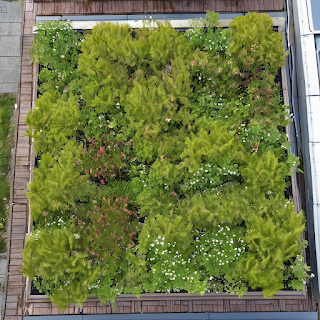Green roofs are becoming an increasingly popular sustainable building technique, providing benefits like stormwater management, urban heat island reduction, and enhanced biodiversity in developed areas. A key factor enabling plants to thrive on rooftops is the growth media used. It must withstand harsh wind, sun and moisture fluctuations while supporting vegetation through its entire lifespan. With many options available, choosing the right sustainable planting media is crucial for green roof success.
This article explores various media commonly used in extensive and intensive green roof systems. Factors like weight limits, drainage properties, nutrient content and longevity will be considered. Local materials and closed-loop solutions are emphasized to minimize embodied impacts.
The goal is to equip building owners and designers with the knowledge to select sustainable media tailored to their project goals and roof specifications. With the proper growth substrate in place, green roofs can flourish as beautiful, low-maintenance green spaces providing ecological benefits for many years to come.
Extensive Green Roof Planting Media
Most common on flat or slightly-sloped roofs with weight restrictions, extensive systems feature shallow planting depths (2-6 inches) suitable for drought-tolerant succulents, herbs and grasses. Lightweight media are key.
1. Lightweight Mineral Substrates
Materials like expanded shale, clay or slate have excellent drainage but lack nutrients requiring fertilizer. They are durable with lifespans over 25 years. However, mining and transport impacts must be weighed.
2. Lightweight Soil Substrates
Mixtures of pumice, scoria, rice hulls or recycled materials with mineral aggregates create soil-like media balancing weight and nutrition. Organic content improves water retention without becoming waterlogged. Local materials reduce embodied impacts.
3. Sedum Carpets
Prefabricated rolled sedum blankets can be installed rapidly, with root systems already established in a soil/mineral matrix. However, limited plant diversity may impact biodiversity goals.
Intensive Green Roof Planting Media
Deeper systems (6-24+ inches) on roofs with structural capacity support a wider range of vegetation including perennials, shrubs and small trees. Heavier media are acceptable.
1. Topsoil
Imported topsoils are inexpensive and support plant growth well but have high transportation impacts. Amendments may be needed for drainage and fertility depending on source.
2. Compost-Amended Topsoil
Incorporating compost improves structure and nutrition, reducing need for fertilizers and irrigation over time as compost breaks down. Local compost prioritizes low impacts.
3. Custom Soil Blends
Mixtures tailored for the project using on-site or regional materials like composted woodchips, coir, biosolids or recycled aggregates create a self-sustaining medium. Nutrient levels require monitoring.
4. Modular Systems
Prefabricated trays filled with custom soils provide instant vegetation and drainage control during installation. But plastic trays have embodied impacts requiring consideration.
Optimizing Green Roof for Sustainability
When selecting media, considerations beyond just physical properties include:
- Locally Sourced Materials - Prioritizing regional aggregates, compost and soils minimizes transportation impacts.
- Closed-Loop Solutions - Using recycled materials diverts waste from landfills while providing nutrients.
- Lightweight Formulations - Reduced weight eases structural demands and transport requirements.
- Fertility & Water Retention - Nutrient and moisture needs are balanced to limit supplemental fertilizers and irrigation over the long-term.
- Durability - Media withstands weathering and maintains structure/drainage properties for a 25+ year lifespan.
- Biodiversity Support - Supports diverse planting palettes adapted to the local climate and growing conditions.
With these sustainability factors in mind, green roof designers can specify media optimizing ecological and economic benefits for each project's budget and goals. Proper installation then allows vegetation to flourish.
 |
| Green Roof Plant |
Conclusion
Selecting sustainable planting media requires considering a project's unique green roof specifications and priorities. Local materials, closed-loop solutions, and low-impact formulations should guide the selection process. Both extensive and intensive systems offer media options balancing structural constraints with long-term plant health. With testing, amendments and installation best practices, green roofs can thrive productively for decades as beautiful, biodiverse sustainable infrastructure.
As always, monitoring media performance over time will help optimize outcomes and advance the green roof industry.

Post a Comment